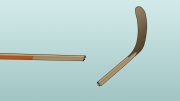On Feb. 27, Chile experienced an earthquake that ranks in the top five strongest earthquakes ever recorded. This tragedy comes on the heels of the devastating earthquake in Haiti, but, fortunately, Chile was much better prepared.
In 1960, Chile suffered a 9.5 magnitude earthquake, which is the strongest earthquake ever recorded. Luckily, Chile has had 50 years to prepare for another catastrophic event, and they rose to the challenge. The government has known for decades that they are sitting on a fault line in the Earth’s crust and has enforced strict building codes as a result. This, along with having an emergency plan in place for such a disaster, limited the number of casualties in the country. Currently, reported deaths in Chile sit at around 279, compared to the 230,000 in Haiti. The death toll is expected to rise in the coming weeks, but not significantly.
Chile’s earthquake may seem like small potatoes in terms of casualties, but it was actually about 500 times stronger than the Haitian quake — strong enough to move the Earth’s axis by about eight cm. This earthquake is classified as a “thrust” type, which is the only type that can move the Earth’s axis. In the case of this 8.8 magnitude earthquake, the Nazca plate was pushed underneath the South American tectonic plate.
The interaction between plates has been causing earthquakes for hundreds of years.
As of now, Chile holds three of the top 10 spots on a list of the strongest earthquakes in history. Some scientists speculate that this sudden slip was a long-delayed result of the 1960 quake, similar to the December 2004, and consequent March 2005, Sumatran Earthquakes.
Along with half a million homes being damaged, a tsunami cruised the Pacific Ocean, causing even more damage in Chile, but no more than increased swells in Hawaii, New Zealand and Australia. All countries noticed well in advance and were able to issue warnings about possible tsunamis. Chile has also experienced many aftershocks, including one on March 3, with a magnitude of 6.0 that prompted evacuation of low-lying areas.
Chile is one of the richest South American countries, and has the ability to swiftly organize the rescue and rebuild stages of an emergency plan. Most roads were cleared within 48 hours, allowing food, water and medical supplies to flow quickly to rural areas.
This does not mean, however, that Chile does not need continued support. While initially the country refused international aid, they have now made a plea for mobile bridges, satellite phones and water purification systems, among other things. It is also estimated that, up to date, an average of 2,000,000 Chileans have been displaced from their homes.
With an increase in tectonic activity in the last 10 years, some people wonder if global warming has a hand in the catastrophes — the answer is no. Global warming or global “weirding” has no effect on tectonic activity and is more likely to affect weather related disasters. Tropical hurricanes and typhoons, the effects of floods, as well as extreme and unpredictable weather, such as the large snow storms the United States experienced only a few weeks ago, are examples of weather-related disasters that humans may have unintentionally affected.
As for earthquakes, the planet will do as it pleases, and it has demonstrated its power twice within as many months. Nearly a quarter of a million people are dead from the two incidences (the Haitian and Chilean earthquakes) and Chile should be an example of how countries can mitigate the damage of natural disasters with foresight and planning.
While Canadians may be exhausted from donating to Haiti, please do not forget Chile. Many of Chile’s industries have been devastated and it will take years to rebuild the infrastructure destroyed. The fact that they were better prepared should not detract from the relief effort directed to them. You can donate to the relief effort by calling 1-800-REDCROSS, or donate $5 to UNICEF by texting “CHILE” to 45678.
Kahlia Beaudette is a third-year science student at the U of M.
1: http://news.bbc.co.uk/2/hi/8542289.stm ;



